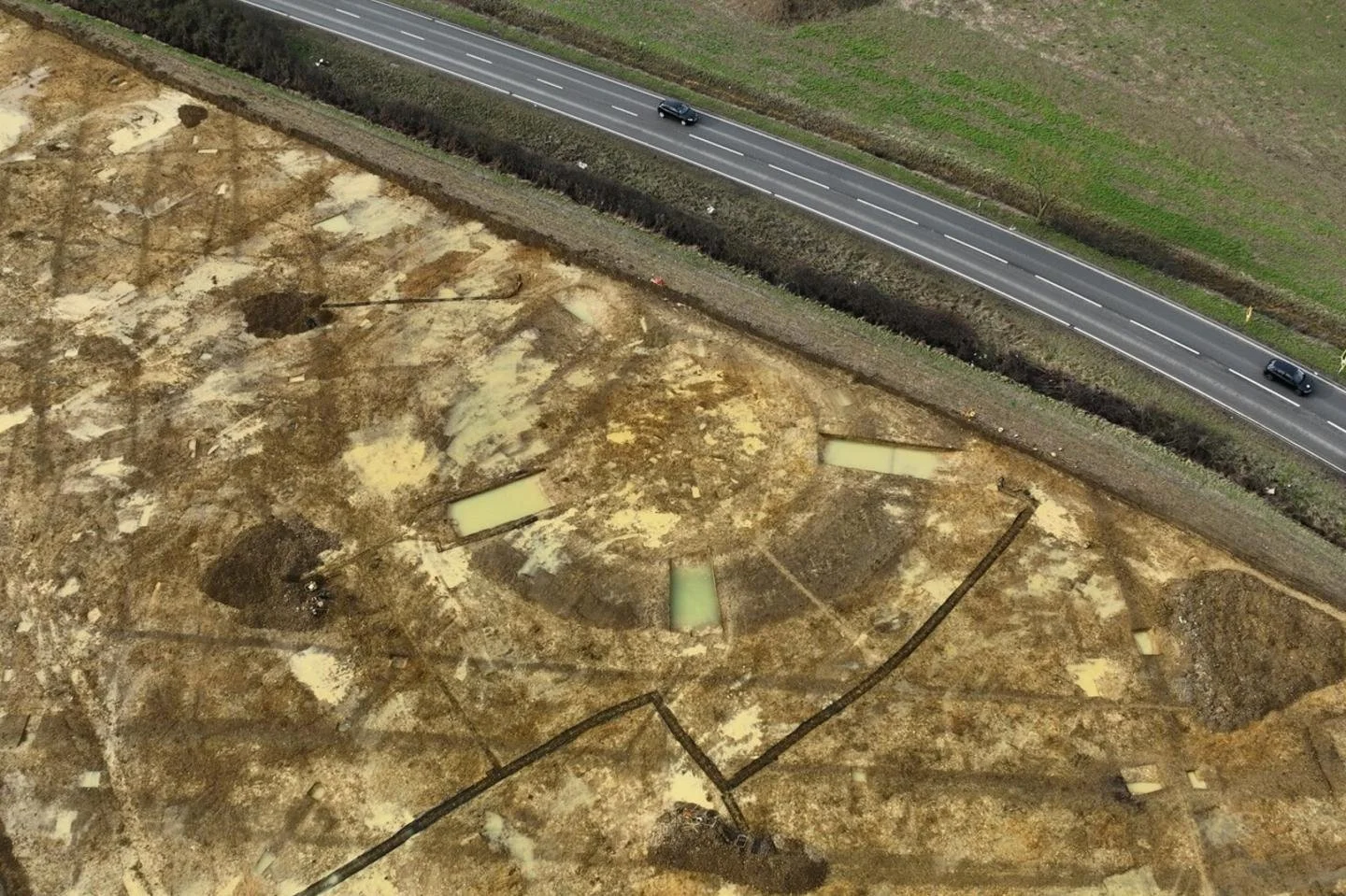Archaeologists from MOLA (Museum of London Archaeology) have uncovered a moated medieval windmill during construction works of the National Highways A428 Black Cat to Caxton Gibbet improvement scheme in Bedfordshire, England.
According to the researchers, the mill dates from between 1066 to 1485 during the medieval period.
Owning a mill would have been a great position of power for the local lord of the manor. The lord received money for the flour and rent from local tenants who farmed the land around it.
Excavations have revealed that the mill had a large central post used to orient the sails towards the wind. The post was found partly buried in a large mound used for support, making it a sunken type of Post Mill that first appeared in Europe from the 1100s to 1200s.
No physical remains of the mill survives above ground and the mound it stood on was levelled for farming. However, upon removing the topsoil, archaeologists found traces of a moat ditch surrounding the structure.
A moat is not unusual for sunken type Post Mills, as the excavated soil from the ditch was used to build the mound where the larger mill structure was situated.
According to a representative from MOLA: “Because this area is naturally very wet, the deep ditch would have collected water and become a moat. We could see evidence for this during our excavations because it was full of shells from water snails!”
Cut trenches called ‘slots’ were sunk into the ditch, revealing various pottery sherds, including medieval green glazed ware, in addition to animal bones, iron nails (likely from the wooden mill building), farming tools, clay tobacco pipe stems, and 17 pieces of millstones.
Header Image Credit : MOLA
Sources : MOLA







